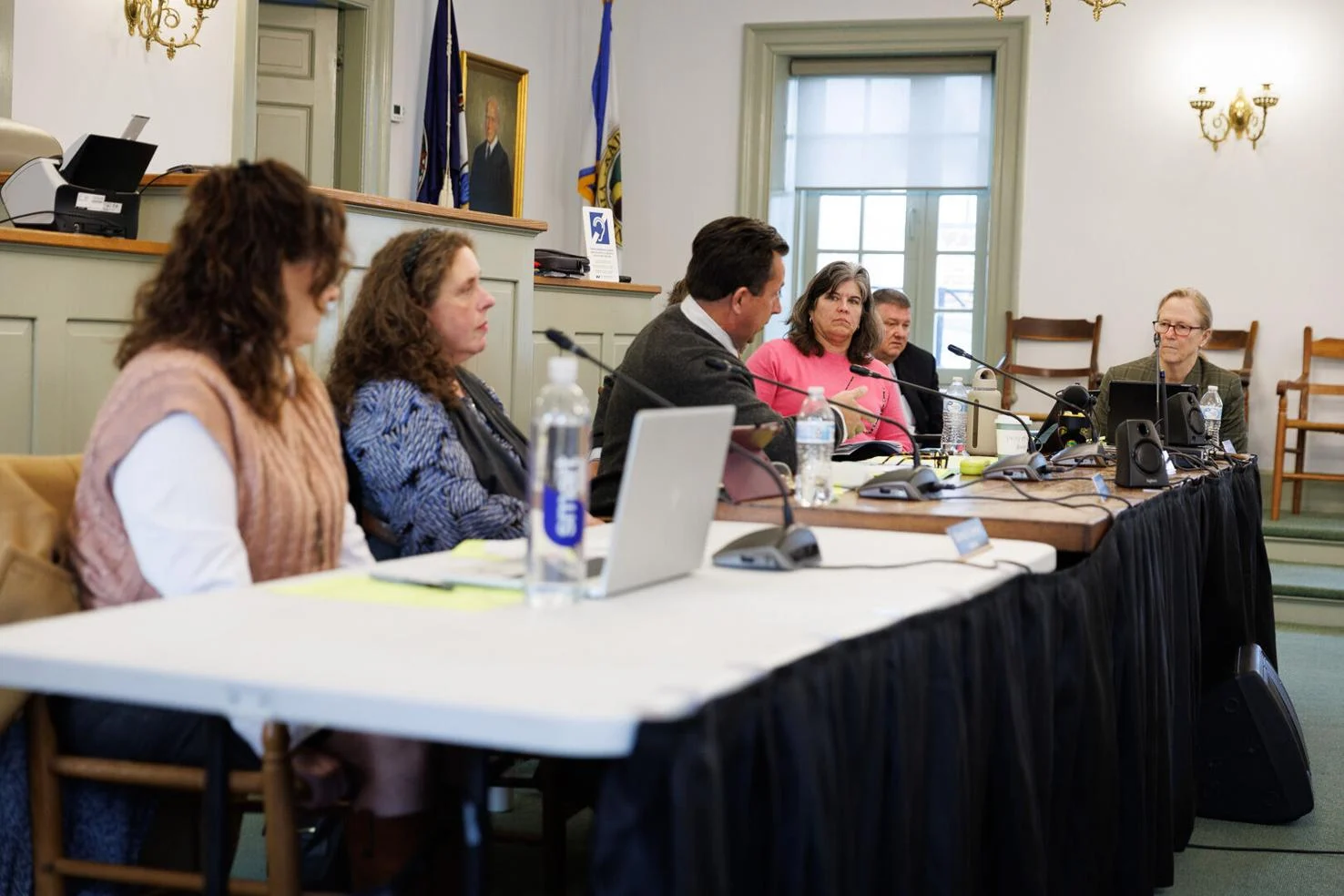County budget tensions: property taxes, schools
The Rappahannock County budget is composed of thousands of line items, but the annual debate centers on two: property taxes that provide 49% of the revenue, and public schools which account for 52% of the spending.
Taxes on Rappahannock’s defining asset — timeless, rolling land — support its principal investment — a fleeting population of young people, who grow up and mostly disperse after graduating. Both are beloved, but as the Board of Supervisors begins work on the budget for the fiscal year beginning July 1, the balancing act grows tense, with decision-makers struggling to avoid squeezing landowners or overspending on the young.
This year, the perennial debate is shadowed by the country’s economic turmoil and the county’s future spending plans. The supervisors understand that any new taxes would come on top of an expected surge in prices resulting from tariffs the Trump administration has imposed on the nation’s largest trading partners.

And closer to home, any tax hikes this year will soon be followed by larger increases to support the construction of a new courthouse, which will require the county to take on $20 million to $30 million in bond-market debt, to be repaid by residents over the next 30 years.
Supervisors seemed apprehensive at the March 12 session that kicked off the budget process. “We know what’s going to happen to the price of everything,” said Stonewall-Hawthorne Supervisor Van Carney, who is wary of piling new burdens on Rappahannock residents by raising taxes.
A similar message came from Hampton Supervisor Keir Whitson, who works for a major Washington, D.C. law firm that is now interacting with clients around the world as they deal with the waves of import duties that have been announced, paused and reinstated since President Trump’s inauguration two months ago.
“The chaos and uncertainty that’s been introduced by this administration is all going to filter down to the American consumer,” Whitson warned. “To be talking about two cents in increased taxes is even more absurd than talking about increasing taxes during the pandemic.”
Raising taxes
To balance the budget, as required by law, County Administrator Garrey Curry proposed raising the real estate tax from the current 55 cents to 57 cents per $100 of assessed property value. The change, if accepted by the supervisors, would put another $384,446 in the county treasury. For a resident with property assessed at $300,000, the tax bill would jump to $1,710 from $1,650. But at the inaugural working session, Curry stressed, “We very much understand that this is a starting point.”
Meals and lodging taxes take some pressure off property taxes, but the effect is relatively small. In the current fiscal year, this revenue source is falling short of its predicted contribution of $580,380, so for the next fiscal year, the planners are counting on only $560,000.
On the expenditure side, the county administrator proposed more support for fire and rescue functions, including staff support for the Sperryville fire company, $30,000 for an operational medical director and a number of technical upgrades for the fire companies.
Balancing journey
Leading up to the starting point, Bonnie Jewell, assistant county administrator since 2022, collected funding requests from all corners of local government, along with data on expenditures in the current year. An alumna of Rappahannock County High School, where she was the salutatorian at her 1994 graduation, she spent more than two decades in local government, working for Arlington Public Schools, then serving as assistant administrator for finance and services in Spotsylvania County.
Jewell added up the requests and tallied the sum of realistically expected revenues from taxes, fees, interest earnings and injections from the state of Virginia and the federal government. The math didn’t add up: Expenditures exceeded revenue by $1,065,487.

She and Curry came up with five adjustments — including the proposed tax increase. Residents wouldn’t carry the entire burden; the schools would absorb a $560,251 hit in cutbacks and adjustments, leaving them with a county transfer of $10,370,851, or 95% of their request for the next fiscal year.
A tax on cigarettes, for three-fourths of the year, would add $56,250 to county revenues. Another $20,800 would roll in by raising building and zoning fees. An adjustment in the calculation of county employees’ health insurance would save $43,740. The combination, with the tax increase, would close the gap.
Last year’s budget drama also began with a gap that the administrator proposed closing with a tax hike, plus a number of less controversial steps. The supervisors pushed back, and Whitson led what others called “a mad scramble for funds.” Various savings and reallocations helped, but the tax hike still seemed necessary for the legally required balanced budget.
Last April, Board of Supervisors Chair Debbie Donehey found “an Easter egg,” Whitson said, another $437,956 in interest income that would likely be earned over two fiscal years on county reserves because lingering inflation was keeping interest rates higher than was assumed when the original budget was planned. Equilibrium was restored and the higher taxes were shelved.
Today, the Trump tariffs are reviving inflation threats, and interest rate expectations may once again need revision. In mapping the budget, Jewell said in her presentation that “expectations are for two more rate decreases to occur in 2025,” with expected interest income of $500,000.
But in the U.S. economy’s present wild ride, many expectations are being called into question. In this case, if inflation brings higher interest rates, the county would benefit by bringing in higher returns on its cash reserves.
Meanwhile, Whitson anticipates the start of another “mad scramble for funds.”






